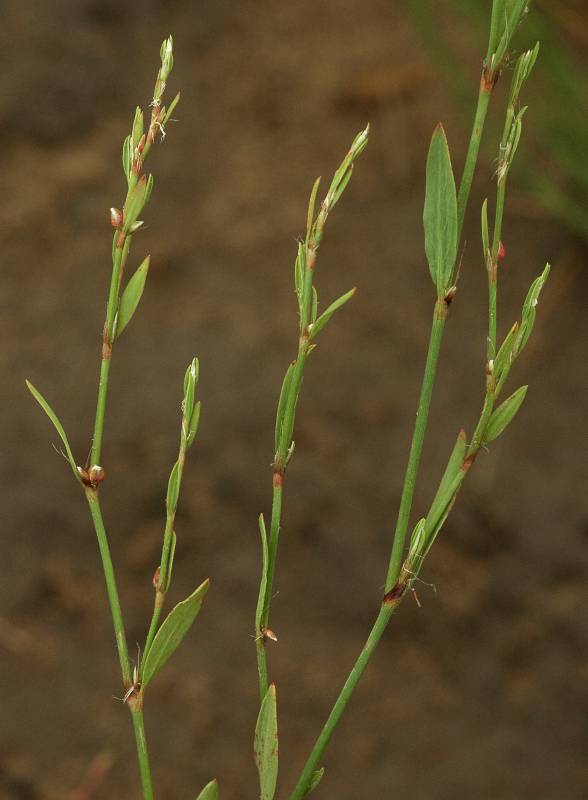Polygonum ramosissimum
Polygonum spergulariiforme
fall knotweed, spurry knotweed
Leaves alternate, basally jointed, linear to narrowly oblong-oblanceolate, 1-3 cm. long and 1-2 mm. wide;
stipules sheathing, lacerate, 3-6 mm. long.
Flowers 1-4 in the axils of the upper leaves and crowded, leaf-like bracts which exceed the flowers; pedicles slender, 1-2 mm. long; the 5 perianth segments 3-4 mm. long, attached 1/3 their length, pinkish with a green midrib;
stamens 8;
styles 3, 0.5 mm. long.
Achene 3-angled, 3-4 mm. long, black, shining and smooth.
Polygonum ramosissimum
Polygonum spergulariiforme
Occurring chiefly east of the Cascades crest in Washington; widely distributed throughout North America.
Occurring west of the Cascades crest and east in the Columbia River Gorge in Washington; British Columbia to California, east to Idaho, Montana, and Wyoming.
- Local floras:
CA,
OR,
WA
- Local Web sites:
CalFlora,
CalPhotos,
Flora NW,
PNW Herbaria
WildflowerSearch
iNaturalist (observations)
USDA Plants Database
- LBJ Wildflower Center
- SEINet
- Plants of the World Online
- Encyclopedia of Life
- Wikipedia
- Google Image Search
- Local floras:
BC,
CA,
OR,
WA
- Local Web sites:
CalFlora,
CalPhotos,
Flora NW,
PNW Herbaria
WildflowerSearch
iNaturalist (observations)
USDA Plants Database
- LBJ Wildflower Center
- SEINet
- Plants of the World Online
- Encyclopedia of Life
- Wikipedia
- Google Image Search



